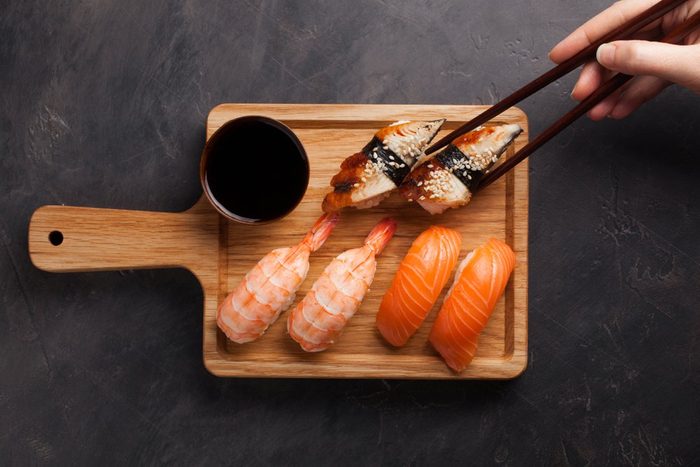
Sushi
Sushi at your favorite Japanese restaurant? Yes, please. Sushi on a work buffet? Say sayonara, says Kendra Busalacchi, RDN, a registered dietitian at Sharp HealthCare. “I would never eat sushi that contains raw fish,” she says. “Fish is very heart healthy with its high omega 3 content. However, the problem is that raw fish, especially when not handled properly and kept at the proper temperature, puts you at very high risk for foodborne illnesses.” Worse, this risk for this goes up exponentially the longer it’s kept out unrefrigerated, such as at a buffet, she adds. Instead, opt for sushi made only with cooked ingredients or choose a baked salmon dish. Some rules, however, are made to be broken—here are the healthy food rules nutritionists ignore all the time.
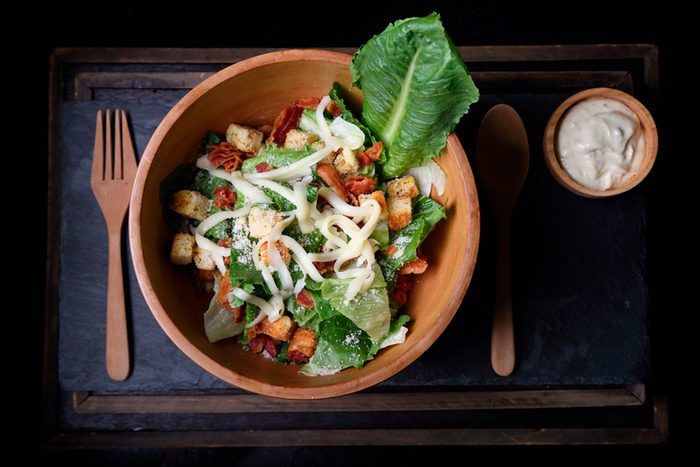
Caesar salad
But this classic salad is a buffet staple! That may be true, but if it’s made the real way—that is, with raw eggs—it’s not safe, Busalacchi says. “Raw or undercooked eggs pose a very high risk of salmonella poisoning and foods such as Hollandaise sauce and Caesar salad dressings are often prepared with raw or undercooked eggs,” she explains. When it comes to sauces and dressings, Busalacchi says, she avoids all creamy dressings and goes for a simple mix of olive oil and vinegar. “This is a win-win because not only do most of these choices decrease the risk for food poisoning, but they are also heart healthier,” she says.

Custom sodas
We’ve all seen those fancy machines that let you mix a custom soda from an almost limitless number of flavors—they’re basically a buffet of drinks. But when it comes to your health, all sugar-sweetened beverages are bombs, including the fancy ones, Busalacchi says. “I avoid beverages such as sodas, juices, and sweet drinks that come with a lot of added sugars and calories,” she explains. “Instead, I opt for water or unsweetened teas.”
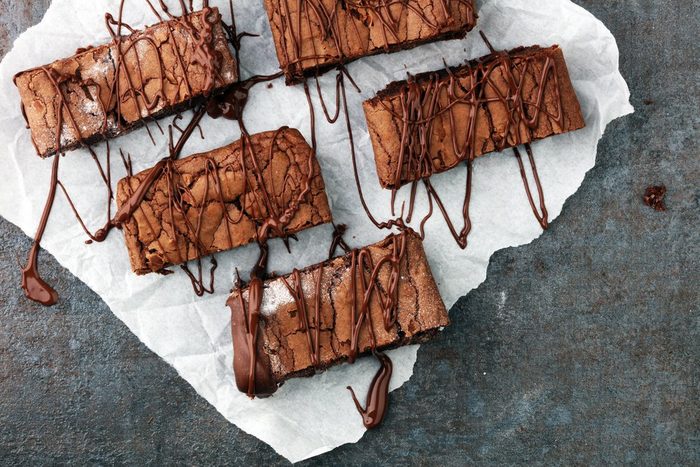
The dessert table
One of the things that make buffets so appealing is the number of choices—especially at a dessert buffet. But that’s always a recipe for over-eating: Our brains don’t respond to satiety signals from sweets like they do from foods like protein. “Desserts, in general, tend to be high in fat, sugar, and empty carbohydrates, and those calories add up faster than you think,” says Gabby Geerts, a registered dietitian at Green Chef. The solution? Either allow yourself only one selection from the dessert table or indulge in the fruit spread to fulfill your sweet tooth craving, she says. Or, satisfy your sweet tooth after you get home by whipping up this healthy oatmeal cookie recipe.
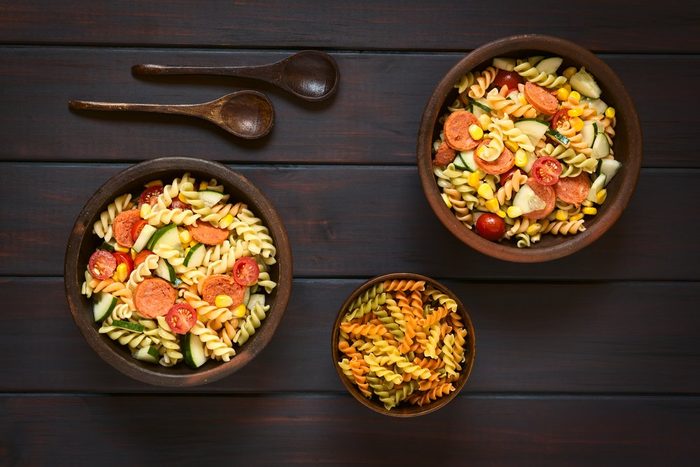
Pasta salads
These buffet staples are a health disaster on two fronts, Geerts says. First, they’re often made with mayonnaise which is one of the most common culprits for food poisoning when not kept cool. (And be honest, when’s the last time you saw a buffet keep their salads on ice?) Second, they’re highly caloric and despite the name “salad” contain very little nutrition. Instead, she recommends choosing a salad that is vinaigrette based or a medley of roasted vegetables. Don’t miss these 11 foods you should always wash before cooking.
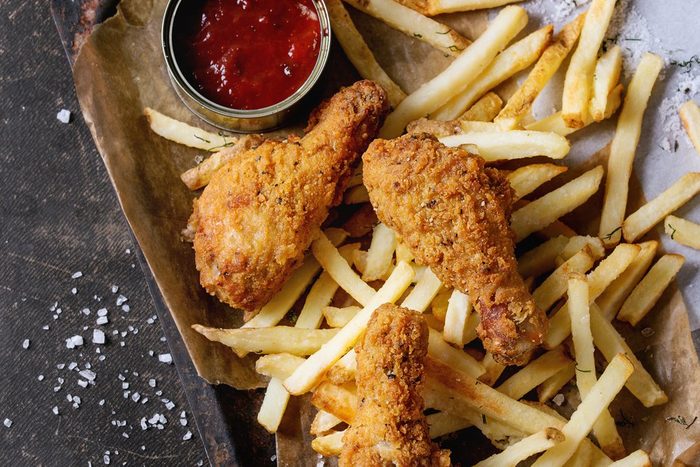
Fried chicken
Fried chicken is tasty, and chicken is a great protein source, right? Don’t be fooled: “Fried foods are typically abundant at buffets, but you should avoid them or keep them to a strict minimum since they are packed with saturated fats and calories,” Geerts says. “Look for pan seared chicken or pulled pork to replace fried chicken. And choose sweet potatoes in place of french fries.” According to nutritionists, this low-carb diet could be sabotaging your health.
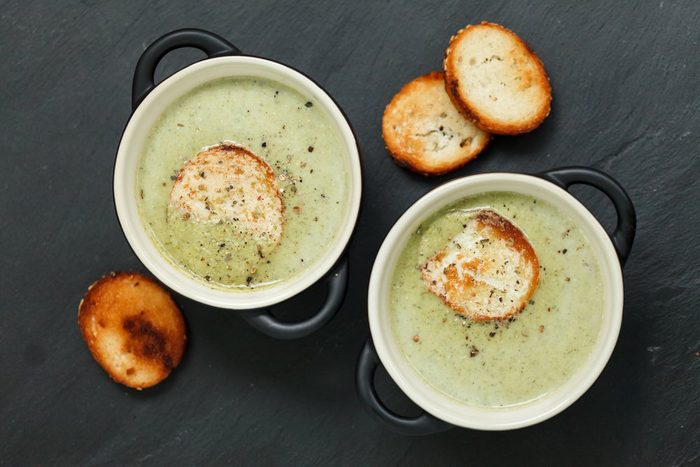
Cheesy broccoli soup
Soup is a low-cal appetizer that can keep you from overeating at a buffet—plus you’re getting broccoli. Not so fast—if the soup is broth-based and filled with just vegetables, this is true, but most soups at buffets are cream-based and loaded with calories, fat, sodium, and preservatives, says Amanda Kostro Miller, a registered dietitian who serves on the advisory board for Family Living Today. “You have to think of a buffet soup as an entire meal. If I decide to have the soup, that is my entrée, not a side,” she says. If there is an option for a light, broth soup, like miso or vegetable, choose that. If not, go for a protein-packed entree like steamed shrimp or baked chicken which will keep you satiated.
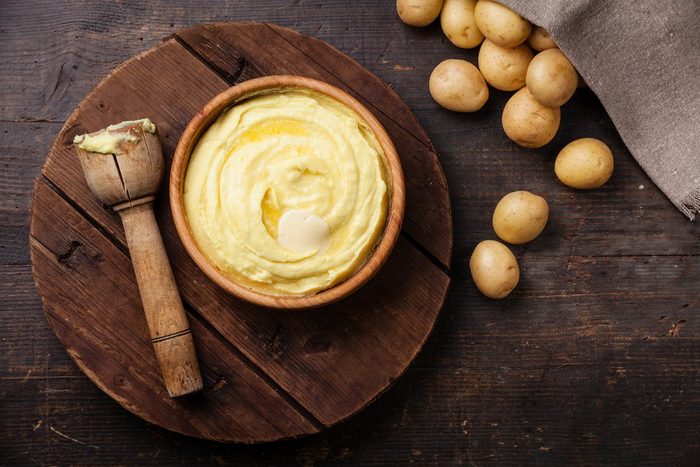
Mashed potatoes
Although turkey or steak without a side of creamy, fluffy spuds seems like a mistake, those potatoes can pack an unpleasant surprise. “Mashed potatoes at a buffet often come from a box or prepackaged mix, have lots of sodium, lack the nutritious potato skins, and have lots of added fats,” Miller says. A better option? Baked potatoes. “Roasted or baked potatoes usually have the nutritious skin and you can control what condiments you add,” she says.
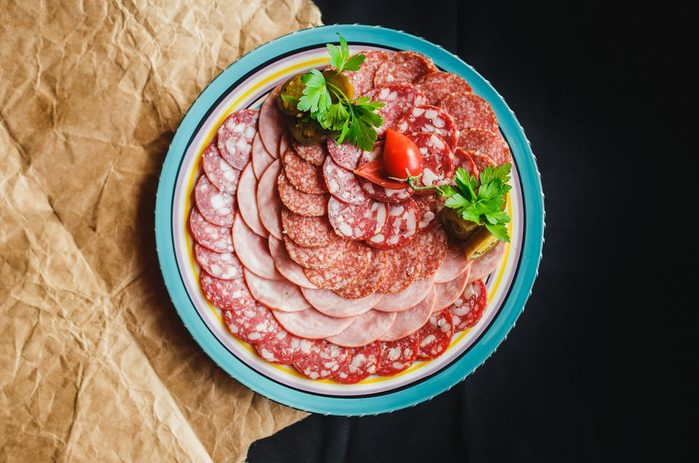
Cold cuts
A build-your-own sandwich buffet is a common lunch option and often has some healthy options. The trick to a nutritious sandwich is to avoid sausages, salami, bacon, hot dogs, cold cuts, or other types of processed meats, says Nathalie Sessions, a registered dietitian at Houston Methodist Hospital. “Not only do these choices contain a lot more sodium and saturated fat than fresh meats but they also contain nitrates or other dangerous preservatives,” she explains. Multiple research studies have linked eating nitrate-laden foods with colon cancer so avoid them at all costs. Instead, choose fresh meats or go veggie and use avocado to make it more filling, she advises.
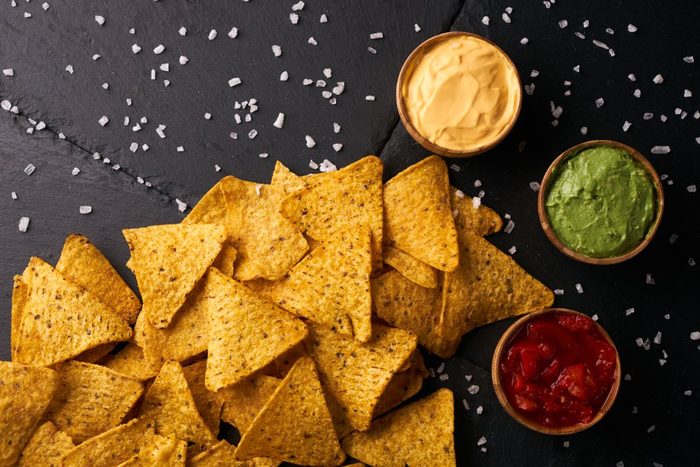
Nacho cheese
Nachos are a tried-and-true favorite of game-day or other casual buffets but they are problematic: Setting aside the fact that fried tortilla chips aren’t healthy, the cheese (or cheez) you put on them is a sneaky nutritional landmine, Sessions says. It’s loaded with unhealthy fats, artificial colors, and preservatives. Instead, go for plain salsa to add that spicy kick to your chips for one-tenth of the calories, she says. Find out more weight-loss tricks only nutritionists know.
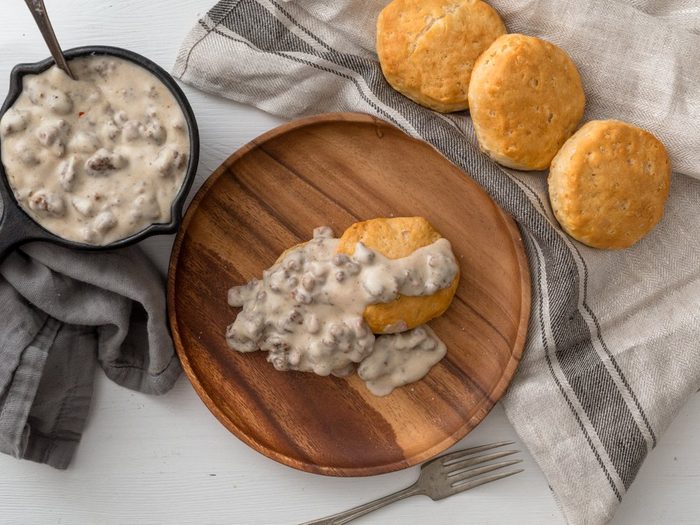
Biscuits and gravy
Calling all brunch lovers! A brunch buffet can be the highlight of your weekend, as long as you make choices that won’t haunt you through Monday and beyond, says Cheryl Mussatto, a registered dietitian and author of The Nourished Brain, The Latest Science on Food’s Power for Protecting the Brain from Alzheimers and Dementia. “Lots of people love biscuits and gravy but when they pile their plate with it, they are also piling on quite a bit of fat, lots of carbs and not that much protein,” she says. A far better option is to choose a veggie omelet as it has more protein, less fat, and some fiber from the veggies.

Soft serve ice cream
Lots of restaurant buffets aim to satisfy hungry families, and a common crowd pleaser is the soft-serve ice cream machine. The problem is that for kids (and, let’s be honest, some grown-ups), it can become the whole meal, Mussatto says. “All-you-can-eat ice cream is too easy and tempting, resulting in lots of excess calories, fat, and sugar,” she says. Instead? Look for a buffet that offers frozen yogurt or, even better, Greek yogurt, she says. Skip the candy toppings in favor of fresh fruit and a sprinkling of chopped nuts.
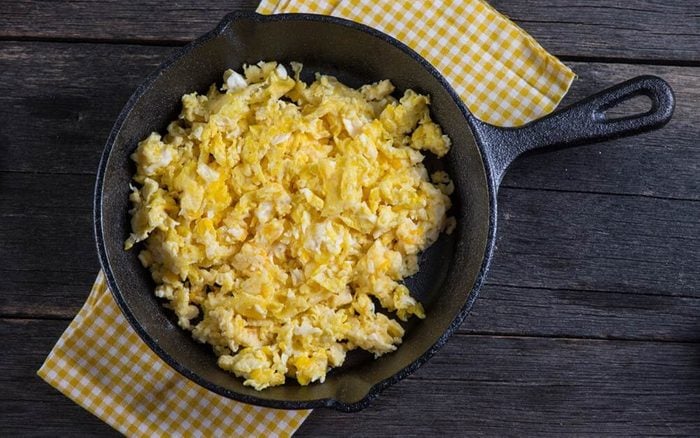
Scrambled eggs
Breakfast buffets aren’t complete without a giant vat of rubbery scrambled eggs. These may be a good source of protein, but be cautious, says Karen Z. Berg, a registered dietitian at The Cancer Institute at St Francis Hospital. “For starters, these eggs are not usually made with fresh eggs and may contain fillers,” she says. “In addition, most places don’t keep them at warm enough temperature—eggs should be kept above 140 degrees—and that can be unsafe.” A healthier and safer option is the omelet bar as the eggs are cooked to order, and you can add veggies, she says. Here are more leftover foods that will without a doubt make you sick.

Cottage cheese
Salad bars are full of bowls of random toppings, often including shredded cheese, cottage cheese, and yogurt. While these can make good additions to greens, they’re often not served properly, making them unappetizing and potentially bacteria-filled, Berg says. “The bottom of the bowl may be on ice but the food closer to the top isn’t. And let’s be honest, these items are not usually being turned over quickly,” she explains. Instead, she says, look for individually packaged yogurt cups, string cheeses, and other sealed foods.
Next, find out which canned foods nutritionists always buy — and which ones they avoid.
